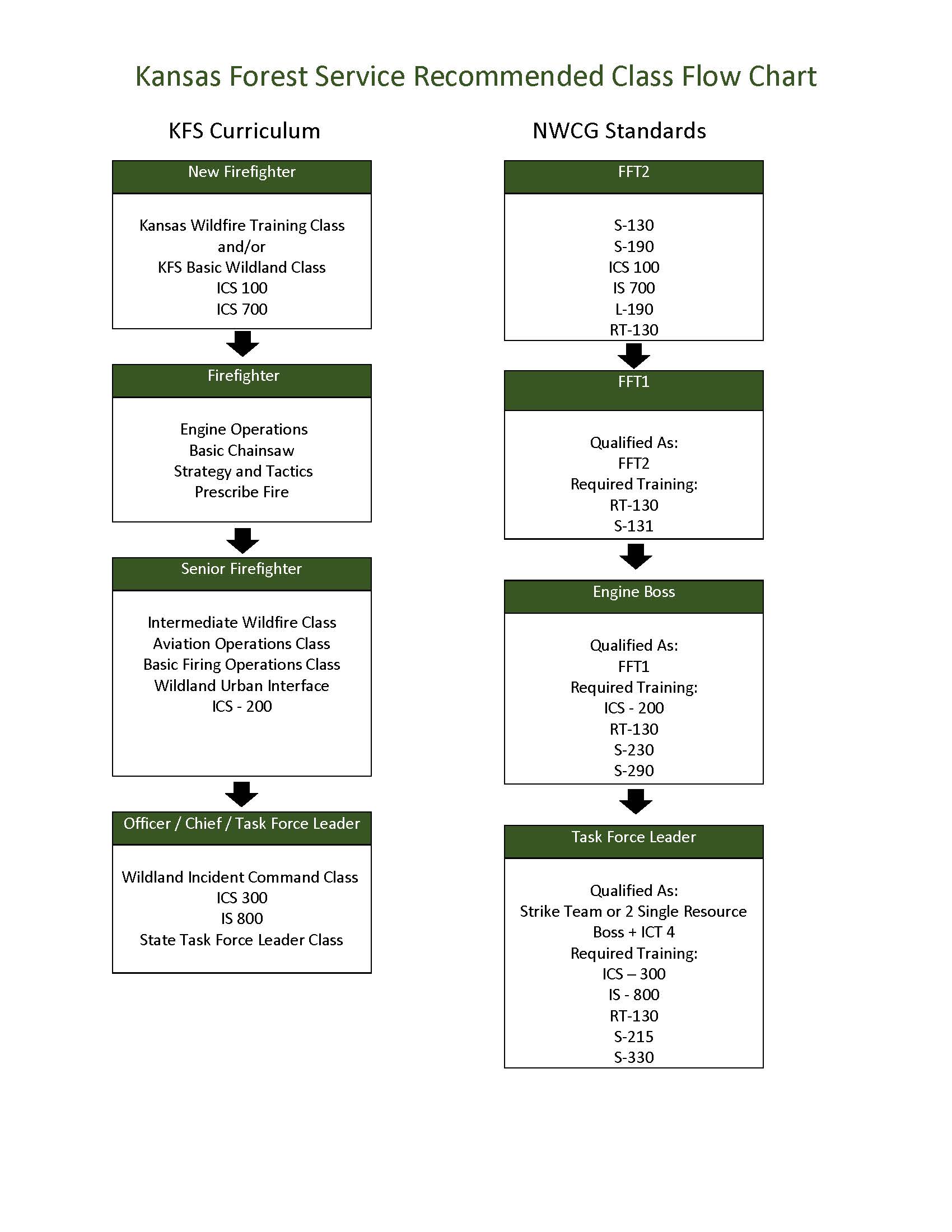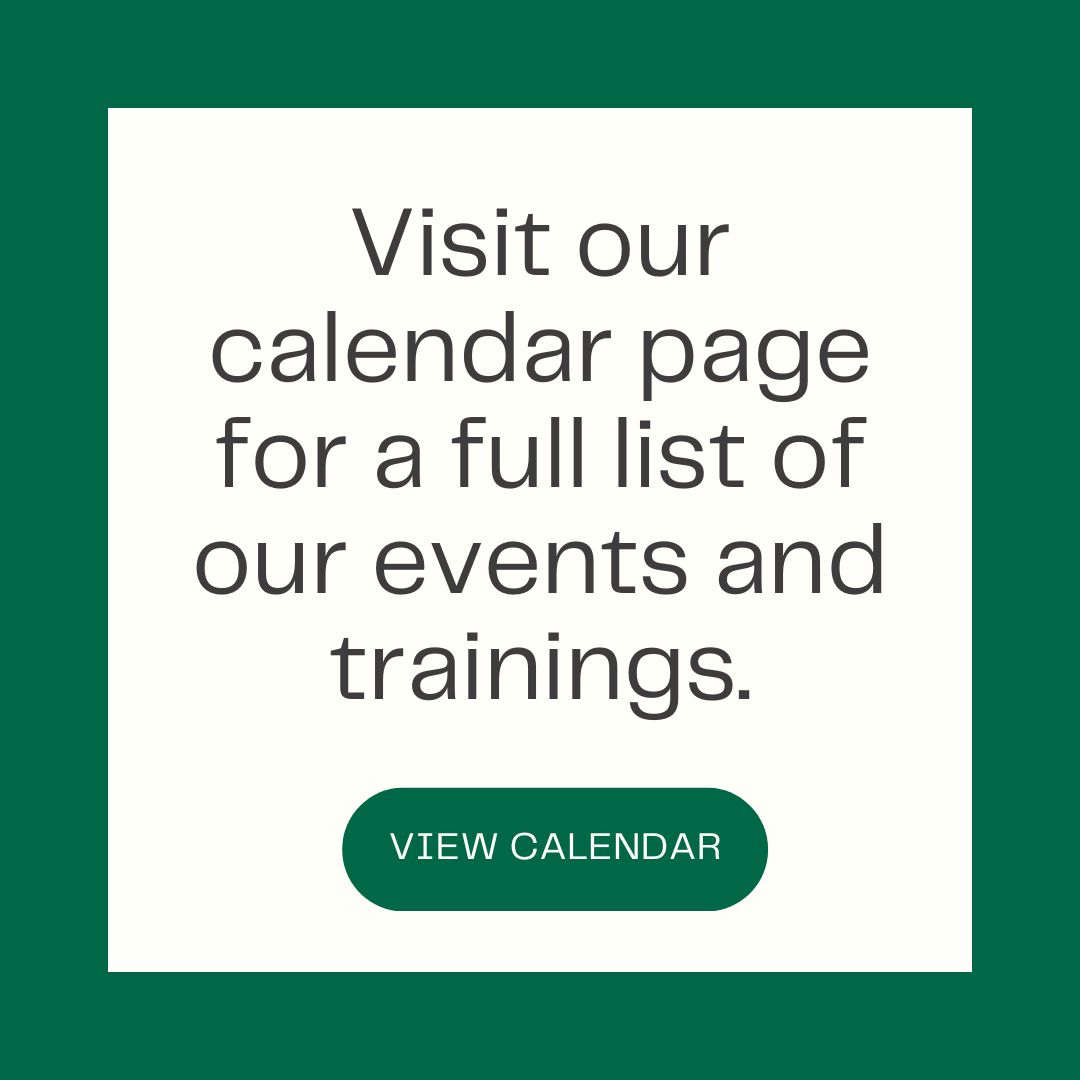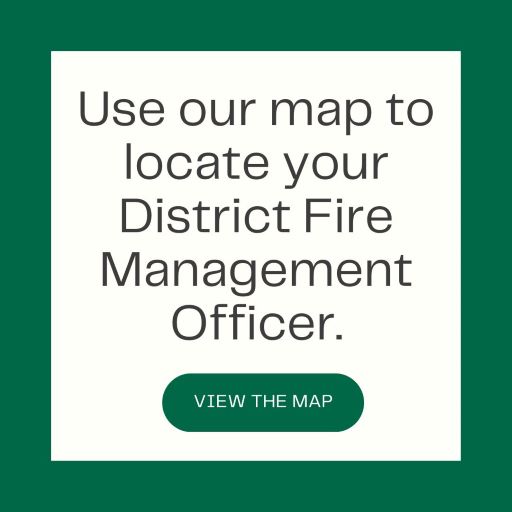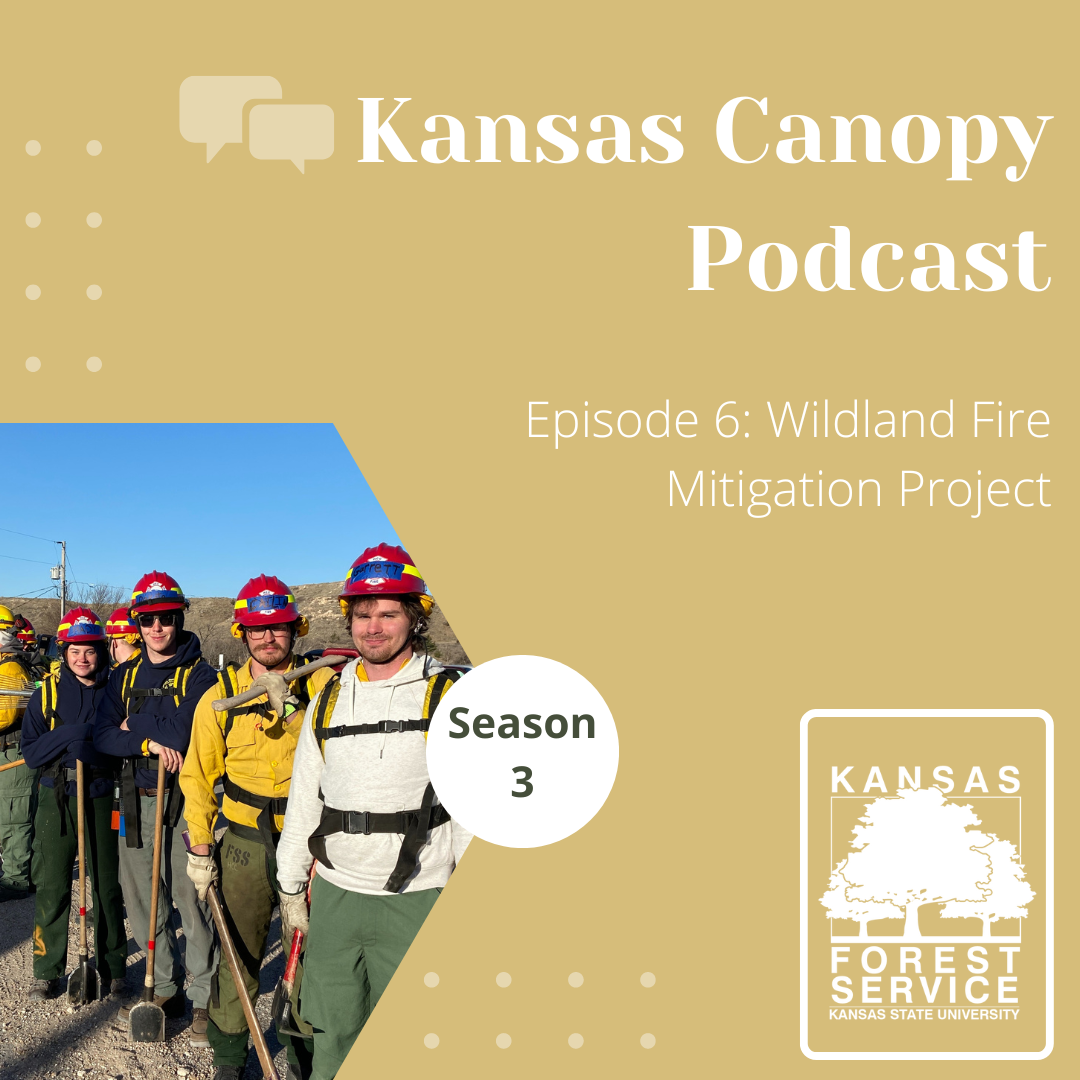Wildland Fire Training and Careers
Wildland fire management can be a rewarding part time job or long-term career, with countless opportunities to move into new and different skills and job functions. KFS is committed to helping as many firefighters and incident management professionals as possible to gain new skills and earn new credentials as efficiently as practical, while maintaining the integrity of the qualification system to ensure that each credential is properly earned. If you have questions or wish to learn more, contact any member of our fire staff for more information. Learn more about Becoming a Wildland Firefighter.
Red Card Certification
Red card is the colloquial name for the “incident qualification card” which is a national credential that identifies the holder as qualified to perform in one or more of scores of positions on wildfire incidents managed by all federal and state wildland fire agencies, and many fire departments in wildfire prone areas. It indicates the holder has met standards set forth by the National Wildfire Coordinating Group (NWCG) for the position(s) identified on the card, or is a trainee for certain positions.
While there are many, many positions in the Incident Command System for which a person can earn a red card, we will focus on that of a firefighter, since that is how most people start. Anyone interested in pursuing opportunities in areas other than operations/firefighting, is encouraged to do so, and KFS Fire staff would be happy to explain that process. In Kansas, KFS is the certifying and credentialing agency for all non-federal employees.
For firefighters, to earn your first red card, there are a couple of requirements. First, you must complete the required training. There are four courses, which can be taken in a traditional classroom format, or three can be taken online. IS-100, Introduction to the Incident Command System, and IS-700, Introduction to the National Incident Management System are available free, online, at training.fema.gov. S-190, Introduction to Fire Behavior is available at onlinetraining.nwcg.gov. All three can be completed, and certificates issued, entirely online. Keep a copy of all certificates or “congratulations, you have passed…” messages. The fourth, S-130, Introduction to Firefighting, is done mostly online at the NWCG website, but requires a field day led by an NWCG qualified instructor to complete.
Once those four classes are done, you have to pass the Work Capacity Test, more commonly called the pack test. It is a 3 mile hike on level ground, with a 45 pound pack, that must be completed in 45 minutes or less. When the pack test is passed, and you have completed the required training, you can be issued a red card as a Firefighter Type 2 (FFT2). A red card is good for one year, and to renew it, certain requirements listed below must be met.
The “red card” certification is earned by completing the following:
- S-130 Class “Firefighting Training”
- S-190 Class “Introduction to Wildland Fire Behavior”
- L-180 Class “Human Factors on the Fireline
- ICS 100 - Introduction to the Incident Command System
- IS 700 - NIMS: an Introduction
- Pack Test (if wanting full national certification) 3 mile walk with 45lbs and completed under 45 minutes. Must be done annually along with a refresher class to keep current.
Your initial red card expires in one year. There are two requirements to renew a red card. You must take an annual fireline safety refresher, which typically lasts 4-8 hours, and includes both classroom learning and an annual practice fire shelter deployment. You also have to re-take the pack test each year. It is good for 12 months from the date it is passed. Refreshers and pack tests are offered by KFS and other agencies each spring, and are listed on the calendar on the KFS website.
One other requirement to maintain “currency” is that you must work in each position you are qualified for at least once every five years, and it must be logged in the Incident Qualification System database of the agency that issued the card. If you work for someone other than KFS, you simply need to provide the date, time, incident name and size, responsible agency, incident number, and what position you worked in, and we can log it. Experience does not have to be on a national incident, as long as it is verifiable.
Once you have worked a season or two in wildland fire, if you plan to stay in it you may wish to gain new or additional qualifications. PMS 310-1, the Wildland Fire Qualifications System Guide, is available on the NWCG website, and explains the requirements for almost every job in the system. Most require one or more classes, and then “required experience”, which consists of completing a Position Task Book. A task book is a record that shows you have performed the job functions of the position you aspire to, under the supervision of someone already qualified in that job. The agency that issues your red card can initiate a task book for you. You then work as a trainee on assignments, working with qualified individuals. Your supervisor or trainer signs off on each task you successfully perform. Once each task is signed off, which usually takes several assignments to get done, someone qualified in that position can sign the final sign-off if they believe you are ready to do that job, indicating you should be certified in that new position. You bring the completed task book to the agency that credentials you, they certify it, and you become qualified in the new position and it is added to your red card.
For firefighters, getting Faller 3 (and then Faller 2) qualification is a worthy goal, requiring a 3-4 day class, and experience operating a chainsaw under supervision. To move up in responsibility, the next step is Firefighter Type 1/Advanced Firefighter, which typically serves as a squad boss. Then single resource boss (engine or crew boss), and countless additional opportunities are available.
Most agencies will want you to have one or more seasons of fire experience before you begin to advance to FFT1 or beyond, but it is something you can start thinking about right away, and taking the classes when they are available. KFS will also consult with your supervisor or leadership on your fire assignments to assess your readiness to pursue the next level of qualifications. We do not issue task books based solely upon a request, but based on evaluations from supervisors who have worked with you and endorse your readiness to advance within the system.
If there is any possibility you will do anything in wildland fire or emergency services in the future, keep copies of every certificate, class completion, completed task book, or any other such training and qualification records in a safe place. Most folks keep a second copy or a digital copy in another location. Years down the road, you may work for an agency that needs those records, and it is your responsibility to be able to produce them. People have lost qualifications, had to re-train, or missed employment or promotional opportunities because they could not provide documentation of training they had completed 30 years before.
Fire Protection Specialist Positions
The Fire Protection Specialist (FPS) is a position within the Kansas Forest Service (KFS) Fire Program that provides an opportunity to individuals that are available to assist the KFS fire program when needed. An FPS may assist in-state with suppression, incident support or prescribed burns. They also may be deployed nationally to fill positions that they are NWCG (National Wildfire Coordinating Group) qualified for, or as a trainee. The FPS positions are not full-time positions, rather a paid call-when-needed position. KFS will provide some support, personal protective equipment, and tools to Fire Protection Specialists, however they are to be predominantly self-sufficient.
Learn more about becoming a Fire Protection Specialist
To apply for a position as a Fire Protection Specialist, please contact your district fire management officer and fill out our employement interest survey to be contacted when the positions open in the fall.
Training Courses
The Kansas Forest Service (KFS) provides wildland fire training that address all fuel types found in Kansas. All courses are available at no charge to any fire department in Kansas.
These courses, designed by KFS, for classroom presentation and field application all have an emphasis on Kansas fuels. Although designed for Kansas firefighters, these courses are based on nationally recognized courses and are good for firefighters at any levels.
Courses include:
Kansas Wildfire Training Class
This is the statewide class developed in 2020 to teach a standardized course dealing with wildland fire across the state of Kansas. The class covers firefighter safety, fire behavior, tactics, aviation, and other common factors dealing with a wildland incident.
KFS Strategy and Tactics Class
How do you normally attack wildland fires? Is there a better way? This class goes into the different strategy and tactics to use on a wildland fire. Adding “tools” to the toolbox.
KFS Intermediate Wildland Fire Course
This course will go deeper into wildland fire behavior, fire observations, and leadership skills to develop company officers to make more sound decisions on wildland incidents.
KFS Engine Operations
Strategies and tactics when operating an engine on a wildfire.
KFS Aviation Operations
Are you comfortable using aviation on a wildfire? This class will go over basic communications, operations, safety, and general knowledge of aviation resources.
KFS Wildland Incident Command Class
Are you ready to command a large wildfire? This course will provide you with information on how to transition from a small incident to a large multi-agency incident.
KFS Firing Operations
Fighting fire with fire. This course will go over the tactic of using fire to control fire including learning about the different firing devices, firing techniques, and when to deploy this tactic.
KFS Wildland Urban Interface
When homes are in the way of fires, how do your tactics change? How can you protect structures in your response area?
KFS Chainsaw Operations
This course will go over the basic maintenance on chainsaws, proper cutting techniques and proper PPE/safety when using a chainsaw.
KFS Prescribe Fire
This course will give the basics on why prescribe fire is important and the proper techniques of burning.
These courses provide Kansas firefighters with the opportunity to become nationally qualified and respond to Federal All-Risk incidents. Successfully completing one or more of these courses is the first step to becoming a NWCG certified firefighter. This system allows for two week deployments with career opportunities and knowledge enrichment as a firefighter.
S-130/190 Firefighter Training/Fire Behavior Course
(Full Course - 4 consecutive days)
S-130/190 Firefighter Training/Fire Behavior Course
(Full Course - 2 weekends)
S-130/190 Firefighter Training/Fire Behavior Course
(Blended Version - Online with 1 field day)
S-131 Firefighter Type 1/Incident Commander Type 5 (1 day)
S-200 Initial Attack Incident Commander (2 days)
S-212 Wildland Chain Saws (3 days)
S-215 Fire Operations in the Wildland/Urban Interface (2 days)
S-219 Firing Operations (2 days)
S-230/231 Single Resource Boss: Crew and Engine (3 days)
S-270 Basic Air Operations (2 days)
S-290 Intermediate Wildland Fire Behavior (4 days)
L- 280 Followership to Leadership (2 days)
RT- 130 Annual Fireline Refresher Course (1 day)
For other training opportunities, contact Kansas Forest Service for a list of fire science or accreditation course providers. Other organizations that provide fire training are:
- Kansas State Firefighters Association
- US Forest Service Wildland Fire Training
- Kansas Fire and Rescue Institute
- Emergency Management Institute (FEMA)
- SCAFFA
- Hutchinson Community College Fire Science
- Kansas Fire & Rescue Training Institute
- Wildland Fire Learning Portal
In addition to Wildland Fire training, KFS administers the Federal Incident Qualification System (Red Card) for residents of the State of Kansas. Federal employees receive Red Cards through their respective agencies.
Pack tests and RT-130, Wildland Fire Safety Annual Refresher, are offered annually. Check our Events page.
For all training and Red Card needs, please contact your District Fire Management Officer.

Scholarships & Reimbursements
The Kansas Forest Service also provides scholarships and reimbursements for training, workshops, or conferences offered through KFS. Scholarships are filled on a first-come, first-served basis as funding allows, to apply; download, print, complete and mail the Scholarship Request to the Fire Management Coordinator, 2610 Claflin Rd., Manhattan, KS 66502. After you have attended the activity for which the scholarship was granted; download, print, complete and mail the Scholarship Reimbursement Request along with a certification of completion or other proof of attendance to the same address. Allow 4 to 6 weeks for reimbursement.
Please note: Only Tuition/Fees/Registration and Lodging are eligible for reimbursement. These must be accompanied by original receipts and be signed by the recipient.
If you have already attended an event offered or endorsed by the Kansas Forest Service and would like to be reimbursed for accrued expenses; download and complete both scholarship documents and send them to the Fire Management Coordinator with a brief explanation of what you attended and how it will benefit you and/or your department.


